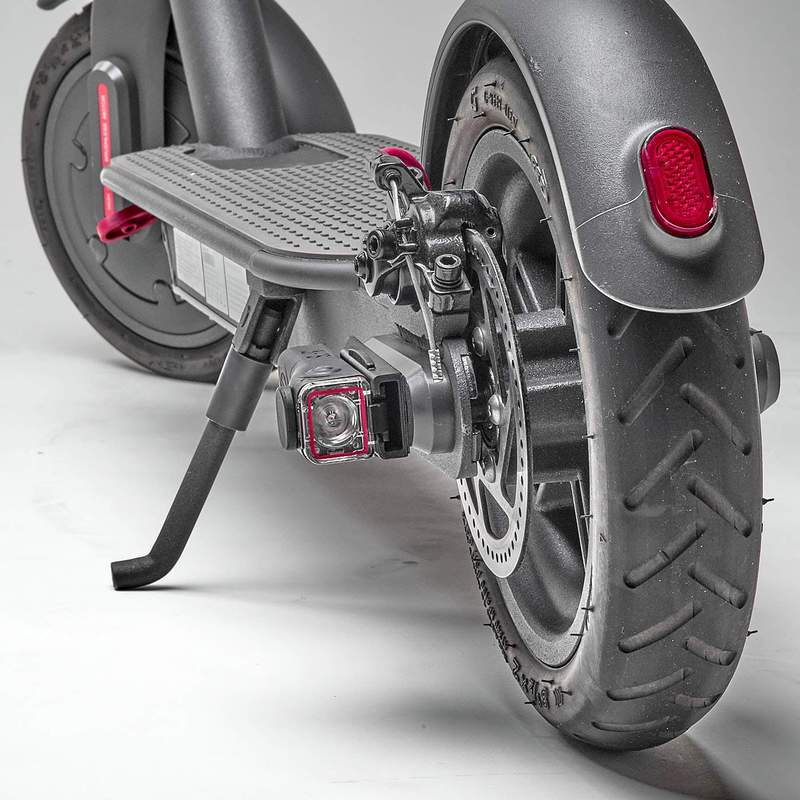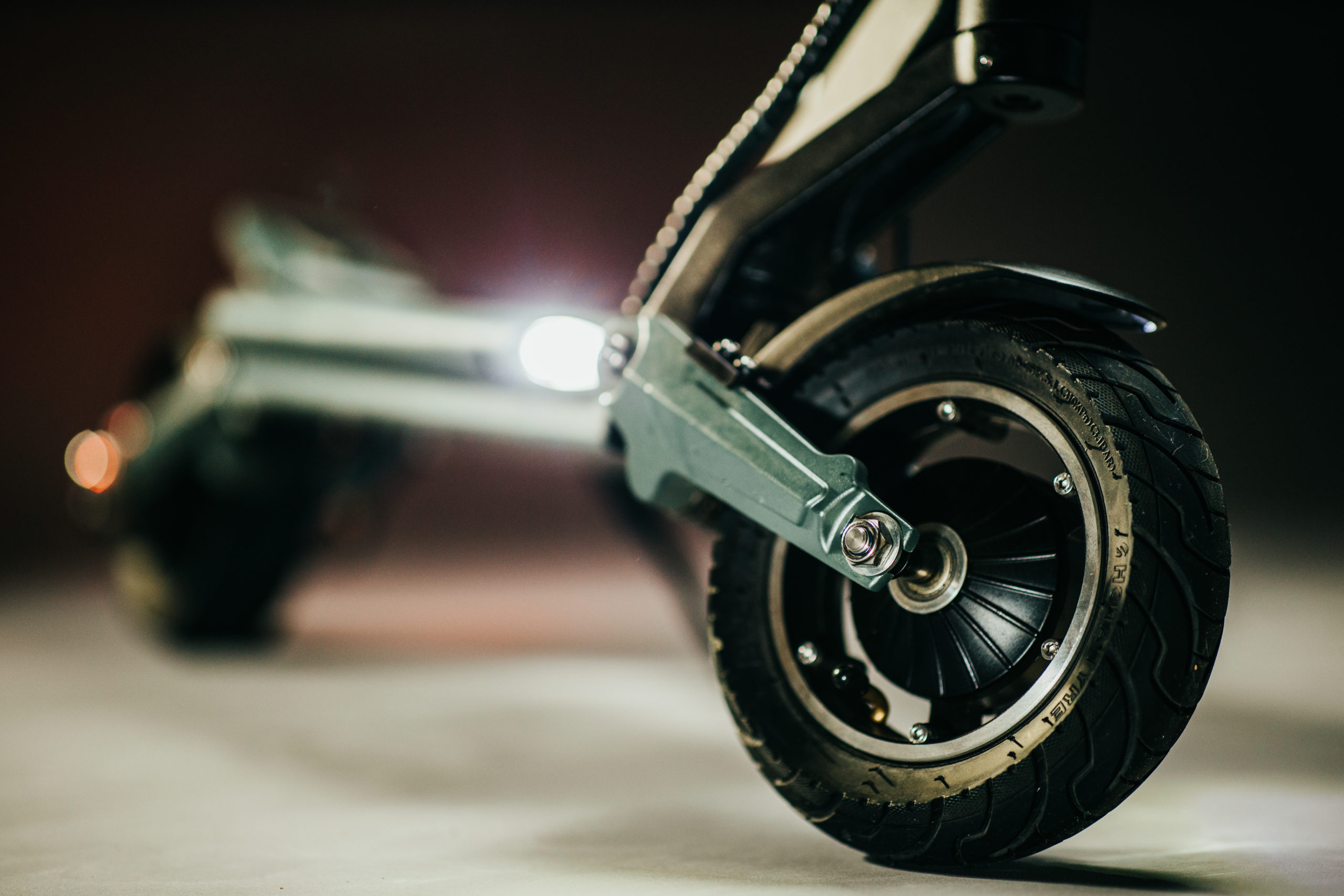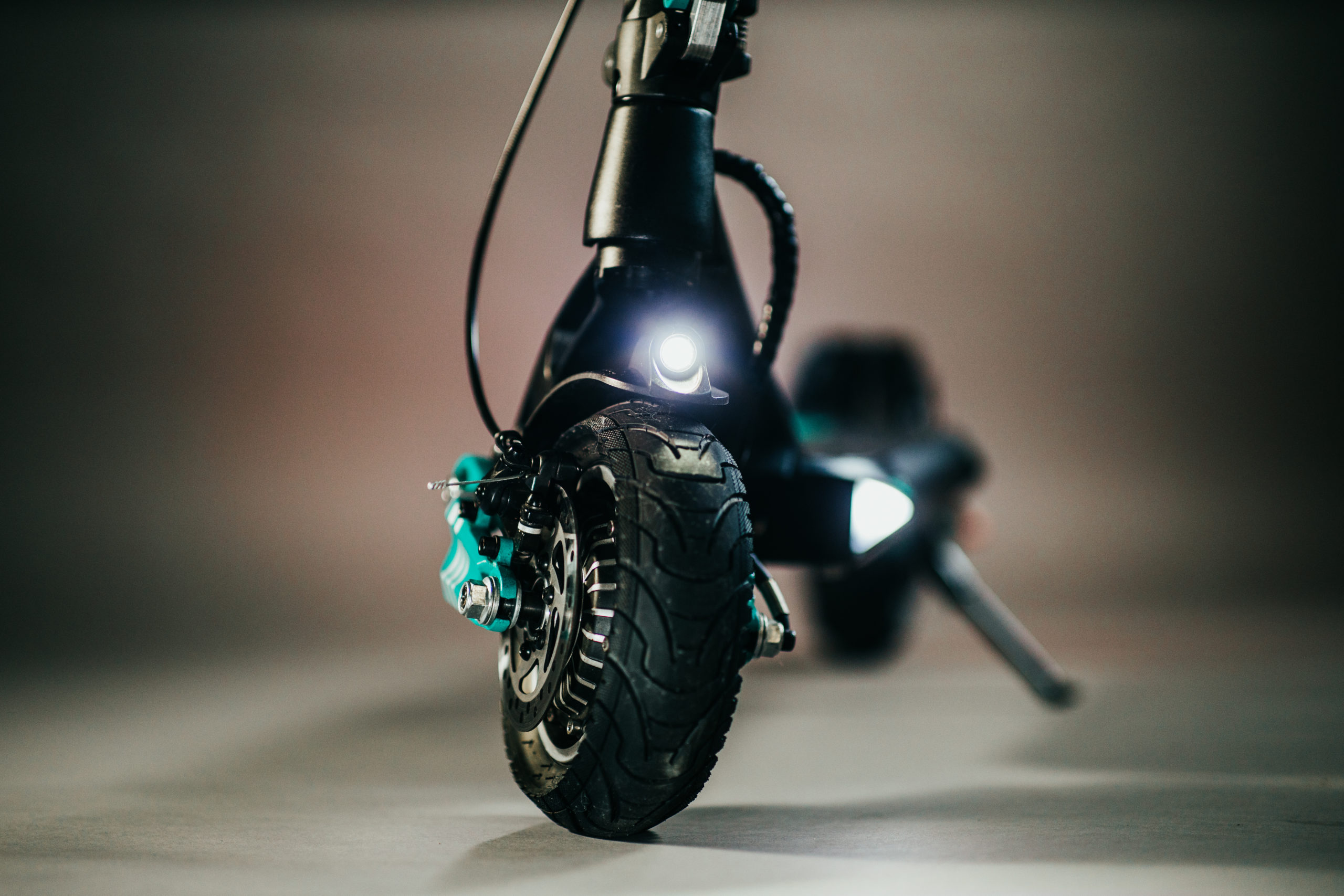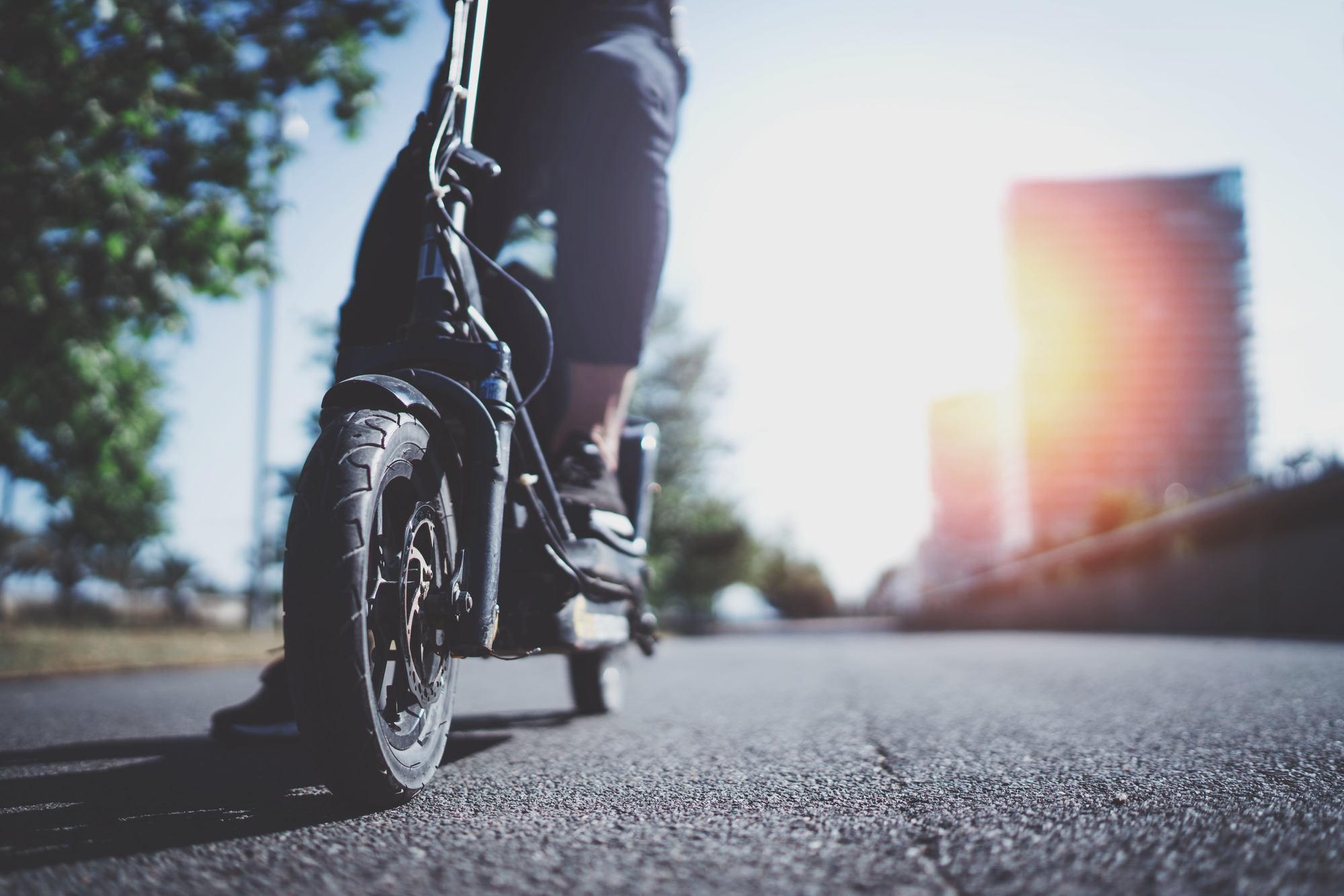Table of Contents
If you are going to use your electric scooter for your daily commutes, you should definitely learn more about electric scooter tyres.
Most people looking to buy a new electric scooter first research the top speed an electric scooter can reach or how far it can go without charging.
They usually don’t think about the tyres.
However, tyres are one of the most important parts of an electric scooter that can make your rides comfortable and joyful or tense and kind of stressful.
They are an essential part of safety, durability, and ride quality.
This guide covers the ins and outs of electric scooter tyres. You’ll learn the advantages and disadvantages of pneumatic (air-filled) and solid (airless) tyres.
The importance of tyres

Everybody understands the concept of tyres, but very few people understand their true importance.
Your tyres aren’t just responsible for taking you from A to B; they’re responsible for every rock you drive over, every obstacle you encounter, and how comfortable your ride is.
Tyres provide the smoothest possible option to help you glide along the road, sidewalk, and trail.
The right tyres can also help determine how many miles you can get out of your battery. They’ll decide how fast your scooter can go and how well you can take a corner. Tyres even play a significant role in how fast you can stop your scooter and how quickly you can accelerate.
Everything rides on your tyres – quite literally. If you look at it from a physics perspective, improving your tyres will improve almost every aspect of riding your electric scooter.
Picking the right tyres will give you the best results.
Tyres are designed for certain people, so they match certain lifestyles. For example, if you like to take your electric scooter off-road or on bumpy paths, the wrong tyres will give you a rough ride and leave your body aching.
The simple fact is that the right tyres on your electric scooter are just as important as picking the right electric scooter.
Sadly, some manufacturers don’t think about the tyre selection when they put together their bill of materials, so it’s up to the consumer to grab the right tyre. The good news for you is that tyres are often easy to change.
Changing your tyres can honestly make your electric scooter feel radically different. Let’s find out why that’s the case and learn more about the different types of tyres.
The different types of electric scooter tyres
There are mainly three different types of tyres that can be used on your electric scooter, and those are:
- Pneumatic tyres – An air-filled tyre similar to the one you’ll find on a bicycle or car.
- Solid tyres – A solid rubber tyre that’s more akin to a skateboard wheel with tread.
- Honeycomb tyres – a combination of air pockets and solid rubber
- Flat-free tyres
Pneumatic tyres in a nutshell
A pneumatic tyre is a tyre that is filled with air.
Overall they provide a far better riding experience by providing good suspension and grip while at the same time having less rolling resistance than solid or honeycomb tyres.
Solid tyres in a nutshell
Solid rubber tyres, on the other hand, are harder and heavier.
They also prevent you from ever getting a flat tyre. A solid rubber tyre is often called zero-maintenance or maintenance-free, but the hard rubber can still wear off, and they are often harder to get off the wheel and replace.
Sometimes near impossible without disassembling the entire motor. Luckily a solid rubber tyre usually lasts for years because it is impossible to puncture them.
Honeycomb tyres in a nutshell
Some solid tyres have a “honeycomb” or “air pocket” construction.
Honeycomb tyres are made from the same rubber as other solid tyres and have an internal honeycomb or ribbed construction designed to provide structural integrity and keep the weight down.
Because there are air pockets within the tyre, they provide more cushion than their filled solid counterparts.
With less rubber than filled rubber tyres, honeycomb tends to be lighter but not as light as pneumatic tyres. These are the least common type of tyres among air-filled and solid varieties.
The air pockets allow the tyre to flex and deform, and the solid rubber removes the need for air. This style of tyre is relatively new so that you can expect some major improvements in the coming years.
Flat-free tyres in a nutshell
A flat-free electric scooter tyre is new to the market. Segway developed this type of tyre over 3-years ago.
These flat-free tyres have an inner tube filled with new solid foaming material. They call it PU material. It will be interesting to see if other electric scooter manufacturers adopt this technology.
Different variations
Also, note that there are various models of the tyres mentioned above, depending on where you’re going to be riding.
If you are going to be riding in the woods or on dirt, then having an off-road enabled scooter with the appropriate off-road tyres is a must. Likewise, if you have one of the faster scooters, then a pair of slick pneumatic tyres should be your preferred choice.
Pneumatic tyres
Pneumatic or air-filled tyres are the most commonly used tyre for any type of vehicle today. They are made up of an airtight inner core of pressurised air.
The pressurised air inside the tyre makes the tyre resistant to outside forces trying to deform the tyre.
However, it also allows the tyre to deform a little to a certain degree. This provides the tyre with a cushioning effect as it hits bumps in the road.
Different types of pneumatic tyres
Inner tube tyres
An inner tube tyre means that the tyre has an inner tube inflated with air to prevent the tyre from deforming.
The tube goes inside the tyre and then inflates to fit snug against the rim.
To get a flat, one must puncture both the outer tyre and the inner tube. These flats can easily be fixed with an old-fashioned bike tube repair kit or by replacing the tube altogether.
Tubeless tyres
A tubeless tyre doesn’t have an inner tube; it only consists of an air-sealed outer tyre against the rim.
Tubeless tyres are more heavy-duty, wear-resistant and more resistant to flats but are often much more complicated to fix. It’s not uncommon that you have to take the entire tyre and rim to a professional tyre mechanic to get it fixed.
Pros of pneumatic tyres
- Better grip on the road
- Better at absorbing shock
- Not a lot of resistance (low resistance)
- Easy to find
One of the biggest advantages of using pneumatic tyres is their ability to absorb unevenness from the terrain underneath you. This provides you with a smoother and less bumpy scooter ride.
If the tyres use the correct manufacturer’s recommended PSI (air pressure), they are superior to solid rubber tyres because they create less friction between the tyre and the road.
Correct pressure also provides the rider with superior grip due to the fact that the tyre deforms to keep traction on the terrain.
Cons of pneumatic tyres
- Having to maintain tyre pressure
- They’re prone to flats
The obvious and most common problem with using a pneumatic tyre is that they are susceptible to flats.
Getting a flat isn’t the end of the world most of the time, and they can often easily be fixed. However, there are circumstances where getting a flat or blowing a tyre can be very dangerous, and that is at high speed.
Blowing a tyre can cause you to lose control of the scooter.
Having excellent and accurate tyre pressure can be the difference between having, good riding experience or a bad one.
If you’re not using the correct tyre pressure, perhaps lower than recommended, you increase the ride’s comfort at the cost of grip. If you use too much pressure, you get reduced resistance at the expense of grip.
That’s why you must inflate the tyres to the manufacturer’s recommended air pressure which is measured in pounds per square inch (PSI).

Solid tyres
Solid, airless tyres are just that, solid.
They are either made out of hard rubber entirely or tyres filled with polyurethane foam. Both types allow for little to no play in their ability to deform.
Solid tyres are attached directly to the wheel and are sometimes called indestructible tyres because they aren’t susceptible to getting a flat because you cannot puncture them, and they are tubeless tyres. But that doesn’t mean they are immune to other types of tyre damage, such as losing a chip of rubber.
The positive thing about these problems is that they rarely render the scooter unusable, as would be the case of a flat tyre.
Pros of solid tyres
- Don’t require much maintenance
- Impossible to get a flat
You can ride unforgiving terrain without having to worry about getting a flat. You also don’t have to bother with inflating your tyres or keeping the correct air pressure, so these tyres require less maintenance.
Cons of solid tyres
- A lot heavier in weight
- A bit of a bumpier ride
- Not as much traction
Solid tyres are heavier due to the increased amount of material used. Their substantial, more robust form makes them very bad at absorbing unevenness in the terrain, which will, on rough roads, give you a very shaky ride.
Honeycomb tyres
A honeycomb electric scooter tyre is new to the market and isn’t widely used across the industry.
The goal with honeycomb tyres is to have a tyre, like the solid rubber one, that cannot be punctured while at the same time being able to provide the cushioning effect of a pneumatic tyre.
Honeycomb tyres utilise the same type of rubber as solid tyres, but they are built where air pockets are left open in the tyre, making them less stiff. With time the design will be improved and will become more readily available.
Pros of honeycomb tyres
- Puncture-proof and resistant to flats
- More cushion than a solid tyre
- More resilient
Honeycomb tyres will provide you with the peace of mind that flats cannot occur. At the same time, they will give you a smoother ride than solid tyres will, and you don’t have to exchange them as often as a pneumatic tyre.
Cons of honeycomb tyres
- More expensive
- Unrefined design (as of today)
- No ability to adjust the tyre
- Costs more
- Increased resistance
With a honeycomb tyre, you cannot adjust them to your liking as you can with a pneumatic tyre.
Since they need more material to be created, they are often heavier and more expensive than a standard tyre. Honeycomb tyres have less resistance than a solid rubber tyre but are more resistant than a pneumatic tyre.
When is it time to replace my air-filled tyre?
If you constantly have to fill the tyre with air because the tyre pressure is continuously low, it is time. If you’re beginning to see that your tread is wearing out, then it’s also time for a new one.
The importance of tyre size
Electric scooter tyre size differs a lot. It ranges from 5 to 10 inches, but most commuter e-scooters have a tyre size of 8 inches, while off-road e-scooters usually sport 10-inch tyres.
Choosing the right scooter tyres can impact your e-scooter speed, riding quality, and performance. Remember that a bigger tyre size offers a more comfortable ride.
Bigger tyres tend to be slightly faster or handle higher speeds. However, smaller wheels are easier to manoeuvre, making them better for beginners.

How to maintain electric scooter tyres
Maintaining electric scooter tyres, specifically pneumatic tyres, can be a hassle for some, but here are simple tips to help you care for your e-scooter tyres.
Always check tyre pressure
Most e-scooter tyres need around 40 to 60 PSI, but each manufacturer has a recommended tyre pressure for pneumatic tyres.
If you’re not sure of your e-scooter tyre pressure, check your tyres since they are sometimes indicated on them. Having the correct tyre pressure for your e-scooter will keep it in good condition and help your e-scooter perform well.
Check the tyres condition
See if the tyre has any punctures or it’s starting to wear and tear.
Look at the tyre’s tread, the grooves moulded in the tyre, and check if it’s shallow or worn out. The inside of the outer tyre should also be checked, but this is usually done when you change tubes in the shop. If your tyres are wearing out, it’s best to replace them.
Add tyre sealant or slime
Pump a bottle of tyre slime inside both of your front and rear tyres. The slime will dry up and seal the hole when your tyre gets punctured, plugging the leak effectively. You can pump the slime through the tyre’s valve stem.
Ride responsibly
Finally, the best way to maintain your tyres is to ride properly. If your e-scooter can’t handle off-road riding, don’t push your e-scooter to its limit as it will wear down or might puncture your tyres.
Do tyres need adjustment?
The only necessary maintenance is checking the pressure and adding air to pneumatic tyres. Eventually, all tyres will need to be replaced after the tread wears down or if they become damaged.
Wear and tear on your tyre
Just like cars, electric scooters will see wear on the tyres as you rack up the miles.
tyres use their tread to grip the surface under them. In turn, the surface will apply friction to the tyre and slowly remove the tread on your tyre. The surface will work like sandpaper over time, and the result is little tread remaining.
Wear on your tyre is unavoidable, and that’s why it lands in the category of routine maintenance required for your electric scooter.
If you ride your brakes especially hard, often drive fast, and ride on grippy surfaces, then your tyres will wear even quicker.
The good news is that you can replace your tyres when their tread is too low.
Final Thoughts

The pneumatic tyre is the best solution for electric scooter owners. This is due to their ability to customise air pressure depending on the rider’s weight, type of terrain, and preference.
However, you need to evaluate the options for yourself and make sure that you are picking the right tyre out of the three for the rider and the type of riding that will be done on the scooter.
Solid tyres and Honeycomb tyres have their place and can be the better option if you are always getting punctures and flats. It all depends on the type of terrain you will be using your scooter on.
So now that you know everything about the different types of tyres, you can make the best decision when selecting and buying a new scooter. Happy riding!

